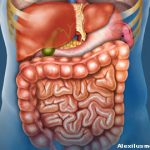
PopTika / shutterstock.com
A new study from Johns Hopkins University School of Medicine, published in the September 2018 issue of Arthritis Care & Research, identifies risk factors and clinical features associated with severe gastrointestinal (GI) dysmotility in patients with systemic sclerosis.1 The findings suggest a distinct pathological process may be at work in this patient group, says lead author Zsuzsanna McMahan, MD, MHS, assistant professor of medicine at Johns Hopkins, Baltimore.
Background
Systemic sclerosis is a complex, systemic autoimmune rheumatic disease. It attacks a variety of organs in the body and is characterized by vasculopathy, fibrosis, inflammation and autoantibody production. GI dysmotility, meaning abnormal movement of food, nutrients and wastes in the GI tract, is associated with muscle atrophy and may result in malabsorption, pseudo-obstruction and, in the most severe cases, the need for supplemental enteral or parenteral nutrition to sustain life.
GI disease, which affects 90% of patients with systemic sclerosis, presents in a variety of ways, Dr. McMahan tells The Rheumatologist. “Some are fairly mild and easily controlled while others are more extreme.”
The time intervals at which the disease progresses are also highly variable. Given the absence of biomarkers with which to predict GI complications or to assess GI disease activity in scleroderma, as well as a lack of known efficacy for disease-modifying anti-rheumatic drugs (DMARDs) in treating scleroderma-associated GI disease, medical management typically involves the treatment of complications, she says. Although severe dysmotility affects about 8% of systemic sclerosis patients, the mortality rate in patients with diffuse disease is estimated to be 85% at five years.2
“Because of the high morbidity and mortality associated with severe GI dysmotility in these patients, defining the clinical characteristics that might identify high-risk patients earlier potentially could open the door to earlier and more aggressive treatment,” Dr. McMahan explains. “Our research is trying to identify common clinical characteristics that might better define homogeneous subgroups.”
Study Methodology

Dr. McMahan
Dr. McMahan and her team performed a retrospective review of clinical features for all patients seen at the Johns Hopkins Scleroderma Center between 1999 and 2015, comparing in a cross-sectional analysis patients with severe GI disease who required supplemental nutrition (n=66) with those who had mild or no GI symptoms (n=1,736). The researchers also looked for associations with specific systemic sclerosis autoantibodies. The strongest risk factors associated with severe GI disease were male sex (odds ratio [OR] 2.47; confidence interval [CI] 95%), having myopathy (OR 5.53; CI 95%), and having symptoms of sicca (dryness in mucosal tissue; OR 2.40; CI 95%).


